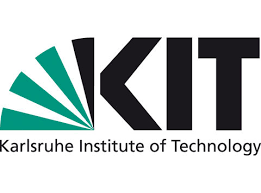Karlsruhe Institute of Technology: Construction machines with hybrid drive: excavating fuel-efficiently
Raw materials and energy are becoming drastically more expensive – and so is building. In addition to climate change, the high costs are another reason to save fuel on construction machinery. Scientists at the Karlsruhe Institute of Technology (KIT) have examined options for more efficient operation using the example of a hydraulic excavator with a hybrid drive. They found potential savings of around ten percent. Special software for controlling the use of different drives could further increase efficiency.
In cars, hybrid drives, i.e. the combination of different drive principles and energy storage, have long been common, for example the combination of petrol or diesel with an electric drive. Construction machines usually have several drives anyway, such as travel drives, swivel drives and working drives, which could each be hybridized. However, in most excavators, the energy for all drives comes from the diesel engine. “We have now examined different hybridization measures for their potential to increase efficiency,” says Niklas Bargen from the Institute for Vehicle System Technology at KIT. The result: “The electrical operation of the slewing gear of a hydraulic excavator, i.e. the motor for lateral rotation, brings, for example, an eleven percent increase in efficiency when loading soil or rubble onto a truck and fuel savings of around eight percent 12.5 percent and nine percent less fuel consumption to be expected, says Bargen. “We assume that there is even more potential. For example, with software that decides which drive is best suited to operate the different functions of the excavator based on needs and efficiency aspects.” ” With additional recovery of kinetic energy when lowering the excavator arm – similar to regenerative braking systems in electric cars – efficiency increases of a total of 12.5 percent and nine percent less fuel consumption can be expected, says Bargen. “We assume that there is even more potential. For example, with software that decides which drive is best suited to operate the different functions of the excavator based on needs and efficiency aspects.” ” With additional recovery of kinetic energy when lowering the excavator arm – similar to regenerative braking systems in electric cars – efficiency increases of a total of 12.5 percent and nine percent less fuel consumption can be expected, says Bargen. “We assume that there is even more potential. For example, with software that decides which drive is best suited to operate the different functions of the excavator based on needs and efficiency aspects.”
For their investigations, the researchers from the Mobile Working Machines (Mobima) branch of the institute equipped an excavator with numerous sensors and thus closely monitored the 15-ton machine for a hundred days at work on different construction sites. “We then simulated different variants of hybridization on the computer and determined the potential for increasing efficiency they would have in real operation,” explains Bargen.
Hybridization as a bridging technology
In view of the estimated consumption of a medium-duty excavator of 100,000 liters of diesel over its entire life cycle, there is considerable potential for saving energy in hybrid drives for construction machinery. “Nevertheless, we see hybridization more as a bridging technology on the way to the complete electrification of construction machines, which still faces major hurdles due to the high energy requirements of the machines and a lack of storage technology.”
The company Stoba E-Systems GmbH was involved in the research project. It was funded with 300,000 euros by the Ministry of Economics, Labor and Tourism of the State of Baden-Württemberg.
As “The Research University in the Helmholtz Association”, KIT creates and imparts knowledge for society and the environment. The aim is to make significant contributions to global challenges in the fields of energy, mobility and information. To this end, around 9,800 employees work together on a broad disciplinary basis in natural sciences, engineering, economics, humanities and social sciences. KIT prepares its 22,300 students for responsible tasks in society, business, and science through research-oriented university studies. The innovation activity at KIT bridges the gap between knowledge and application for social benefit, economic prosperity and the preservation of our natural foundations of life.

